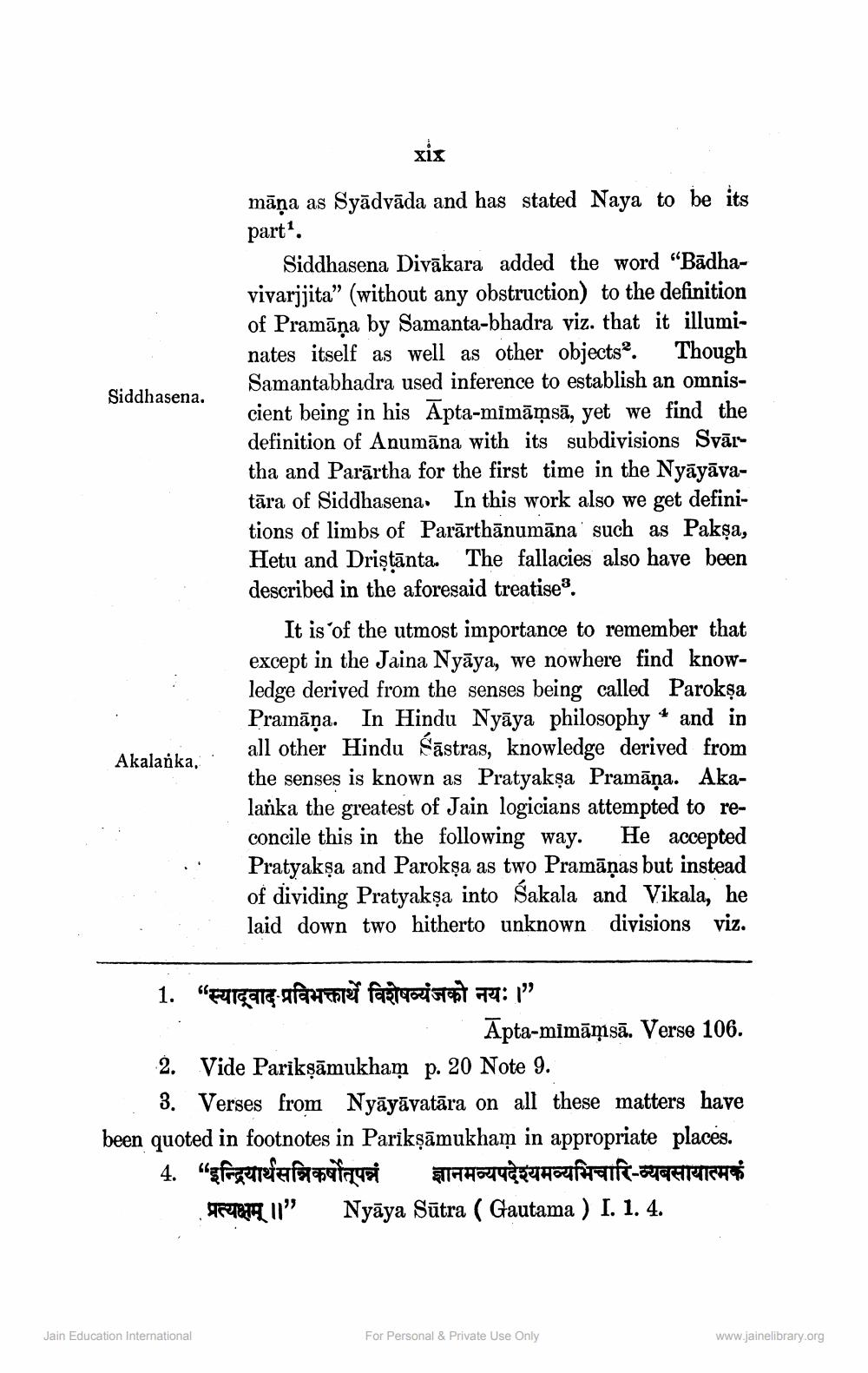________________
Siddhasena.
Akalanka,
xix
māņa as Syādvāda and has stated Naya to be its part1.
Siddhasena Divakara added the word "Badhavivarjjita" (without any obstruction) to the definition of Pramāņa by Samanta-bhadra viz. that it illuminates itself as well as other objects2. Though Samantabhadra used inference to establish an omniscient being in his Apta-mimamsa, yet we find the definition of Anumana with its subdivisions Svār tha and Parartha for the first time in the Nyāyāvatara of Siddhasena. In this work also we get definitions of limbs of Pararthānumāna such as Pakṣa, Hetu and Driṣṭanta. The fallacies also have been described in the aforesaid treatise3.
Jain Education International
4
It is of the utmost importance to remember that except in the Jaina Nyaya, we nowhere find knowledge derived from the senses being called Parokṣa Pramana. In Hindu Nyaya philosophy and in all other Hindu Sastras, knowledge derived from the senses is known as Pratyakṣa Pramāņa. Akalanka the greatest of Jain logicians attempted to reconcile this in the following way. He accepted Pratyakṣa and Parokṣa as two Pramāņas but instead of dividing Pratyakṣa into Sakala and Vikala, he laid down two hitherto unknown divisions viz.
1. “ स्यादूवाद - प्रविभक्तार्थे विशेषव्यंजको नयः । "
Apta-mimamsa. Verse 106.
2. Vide Parikṣāmukham p. 20 Note 9.
3. Verses from Nyāyāvatāra on all these matters have been quoted in footnotes in Parikṣāmukham in appropriate places. 4. “ इन्द्रियार्थसन्निकर्षोत्पन्नं ज्ञानमव्यपदेश्यमव्यभिचारि-व्यवसायात्मकं . प्रत्यक्षम् ॥”
Nyaya Sutra ( Gautama) I. 1. 4.
For Personal & Private Use Only
www.jainelibrary.org




